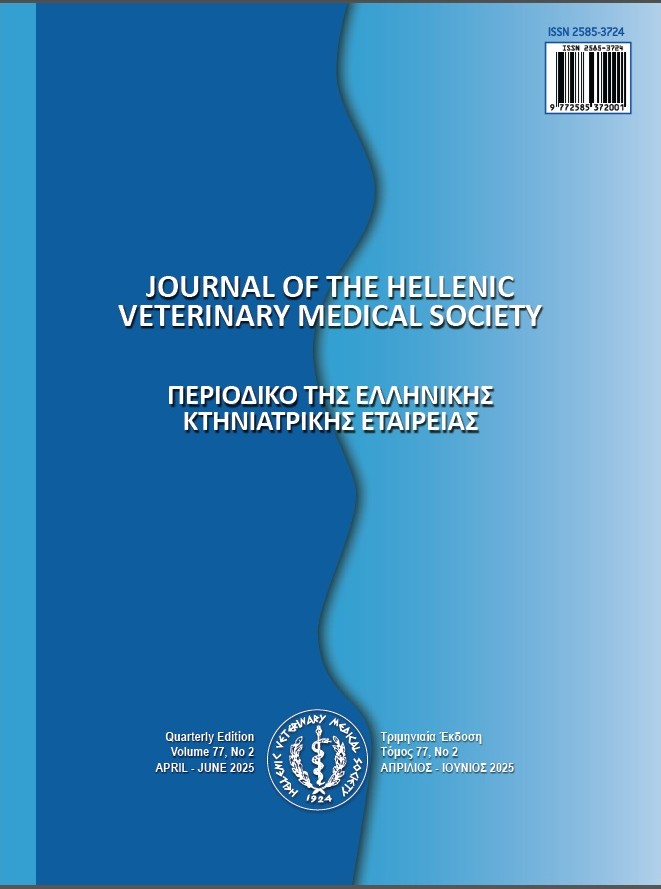Ruminal Acidosis Part I: Clinical manifestations, epidemiology and impact of the disease

Abstract
Abstract
Ruminal acidosis is presented as the most considerable nutritional disorder of ruminants with severe impacts in animal health, animal welfare and considerable economics losses in ovine and bovine herds. The disease can be distinguished as Acute (ARA) and Sub-Acute Ruminal Acidosis (SARA). SARA constitutes as the main nutritional disorder in intensive ruminant farming with several complications, such as liver abscesses, milk fat depression, reduced milk yield and early culling. This paper constitutes the first part of a thorough review about ruminal acidosis. The first part focuses on definition, types of ruminal acidosis, epidemiology, economic impacts and welfare implications.
Article Details
- How to Cite
-
Voulgarakis, N., Gougoulis, D., Psalla, D., Papakonstantinou, G., Angelidou-Tsifida, M., Papatsiros, V., Athanasiou, L., & Christodoulopoulos, G. (2023). Ruminal Acidosis Part I: Clinical manifestations, epidemiology and impact of the disease. Journal of the Hellenic Veterinary Medical Society, 74(3), 5883–5891. https://doi.org/10.12681/jhvms.31237
- Issue
- Vol. 74 No. 3 (2023)
- Section
- Review Articles

This work is licensed under a Creative Commons Attribution-NonCommercial 4.0 International License.
Authors who publish with this journal agree to the following terms:
· Authors retain copyright and grant the journal right of first publication with the work simultaneously licensed under a Creative Commons Attribution Non-Commercial License that allows others to share the work with an acknowledgement of the work's authorship and initial publication in this journal.
· Authors are able to enter into separate, additional contractual arrangements for the non-exclusive distribution of the journal's published version of the work (e.g. post it to an institutional repository or publish it in a book), with an acknowledgement of its initial publication in this journal.
· Authors are permitted and encouraged to post their work online (preferably in institutional repositories or on their website) prior to and during the submission process, as it can lead to productive exchanges, as well as earlier and greater citation of published work.








